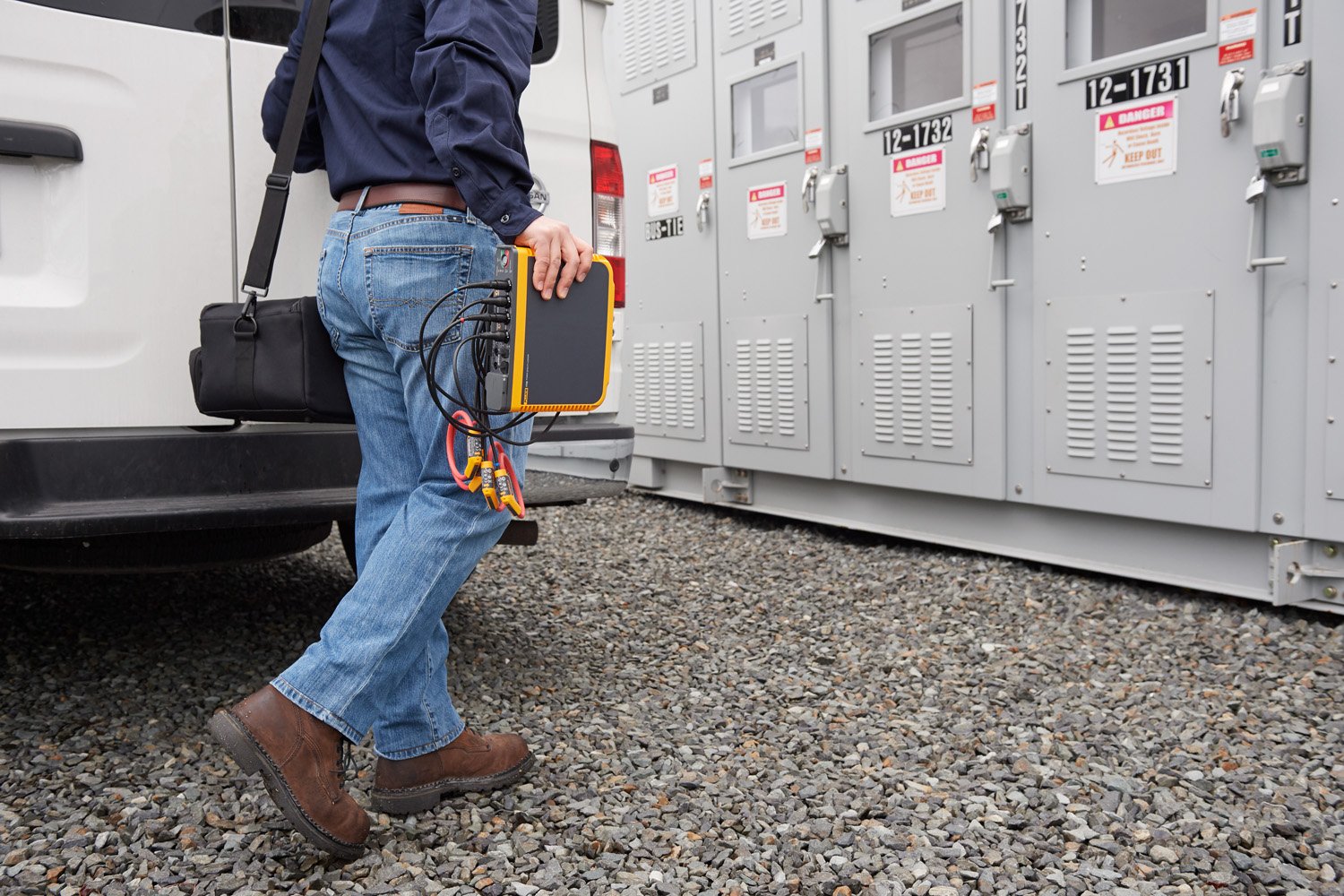The ability to quantify energy use is critical for your facility and your team. Monitoring power consumption of your plant provides you with the data needed to make important energy management decisions.
Why monitor power consumption with a power logger?
- Understand the capacity of your existing electrical panel
- Troubleshoot circuit breaker trips
- Identify energy costs
- Uncover energy waste

Preparing to perform a load study using the Fluke 1746 Power Logger.
1. Plant safety
Electricians are often required to conduct a load study before adding a new electrical load to an existing panel or service. Why? The requirements come from the electrical Inspector, the electrical engineer who designed the project, or the customer adding the new load and the reason is to determine if there is enough capacity to add new loads.
A load study involves using a power logger to document existing load levels (three-phase current draw) over time. That’s where safety comes in. On the positive side, a load study can be used to ensure adherence to local safety regulations. On the negative side, failure to perform a loads study before adding new loads can result in overloading an existing electrical source, creating electrical safety and reliability hazards.
2. Manage energy costs and realize savings opportunities
While energy expenditures are a significant portion of overall operational cost, many companies don’t really know where their energy dollars are being spent, since all they get is one overall monthly bill, with no indication of whether that use was standard or excessive compared to operations that month.
By logging power use at the main service entrance and then at large loads and secondary supplies, facilities can see how much power is being used when, by what, and at what hourly cost. Without fail, the data will turn up several energy wastes that can be rectified by operational changes alone, such as turning off certain loads, reducing loads during peak rate periods, or adjusting the schedule so that loads operate during non-peak rate periods.
3. Accuracy of electrical bill
Owners of large and medium sized facilities often install electrical sub metering to bill tenants for their specific electricity usage. However, these sub meters are commonly installed improperly, putting that billing into question. Installation issues vary, from current transducers installed backwards, current transducers on the wrong phase, and errors in configuring the sub meter.
A good business practice is to double check the reading with a portable energy logger. Logger data provides a rough order of magnitude comparison of what is being billed versus what is used. A significant deviation between the amount charged for electricity usage and the logger data would signal the need to investigate the sub meter setup.
4. Rebates and financial incentives
Utility companies offer incentives and retables to encourage their customers to decrease energy sue. The goal is to service more customers with the same existing power supply, since building new power generation plans is prohibitive. Many incentives and rebates are available for retrofitting existing buildings, such as energy efficient lighting and high-efficiency motors, as well as replacing motor starters with variable frequency drives.
To receive the financial incentive, the utility company will often require verification of the energy savings—an ideal scenario for a load study. A pre-retrofit load study will document the existing energy use to provide baseline data, while a post-retrofit load study verifies the energy saving achieved upon completion of the modifications.
5. Troubleshooting power quality issues
There are many times when the only way to troubleshoot a problem is to capture and analyze data over an extended period. For these advanced troubleshooting scenarios, energy loggers are invaluable—and they are much more affordable and easier to use than a more complex power analyzer.
A good example is when a circuit breaker trips randomly. Obvious events, like a large motor starting up, may not be the cause. In fact, what causes the trips might appear to be totally random or many occur when technicians are not around to observe (like the middle of the night). Because it’s impractical for a maintenance technician to monitor the load until the circuit breaker trips, connecting an energy logger to the load side of the circuit breaker to record the current draw over time can help troubleshoot the trip.